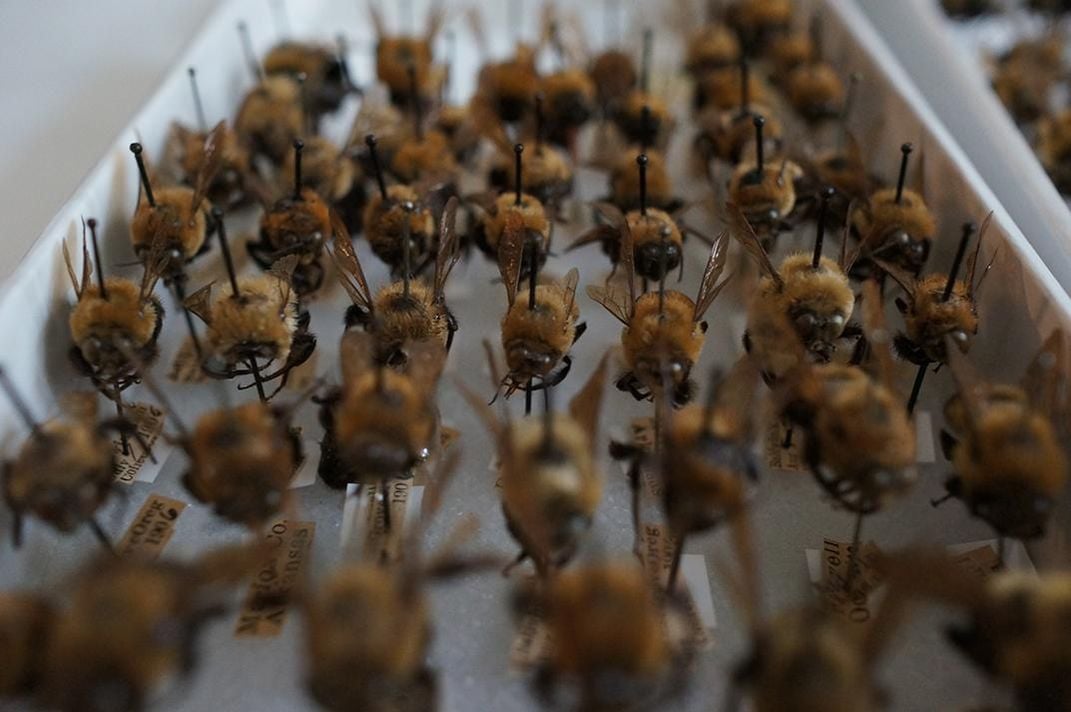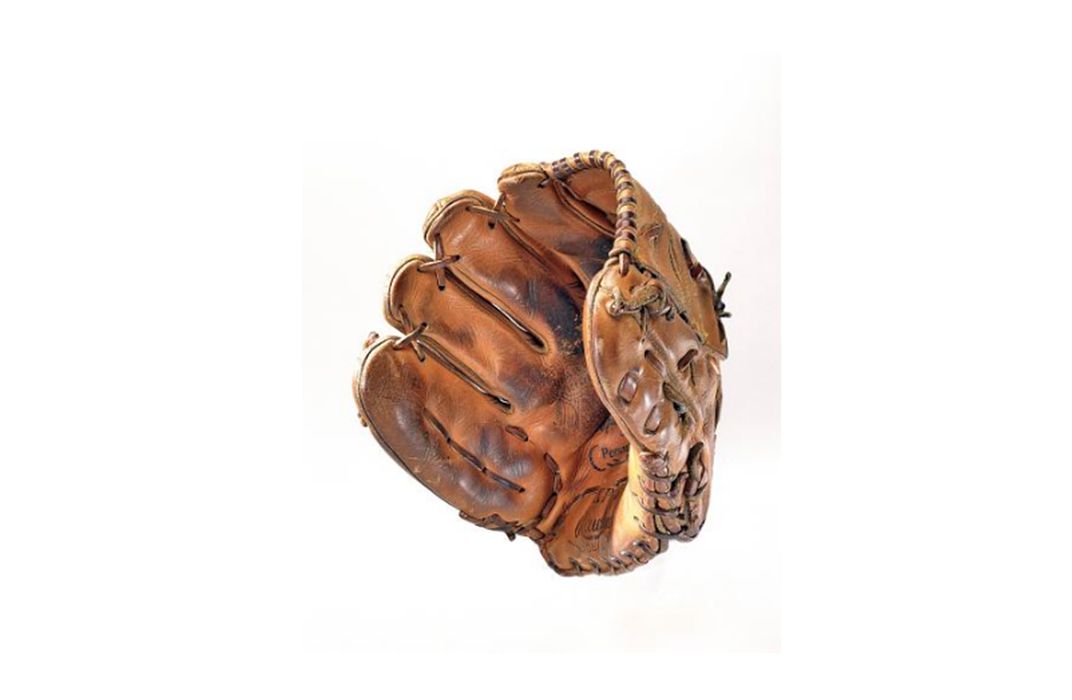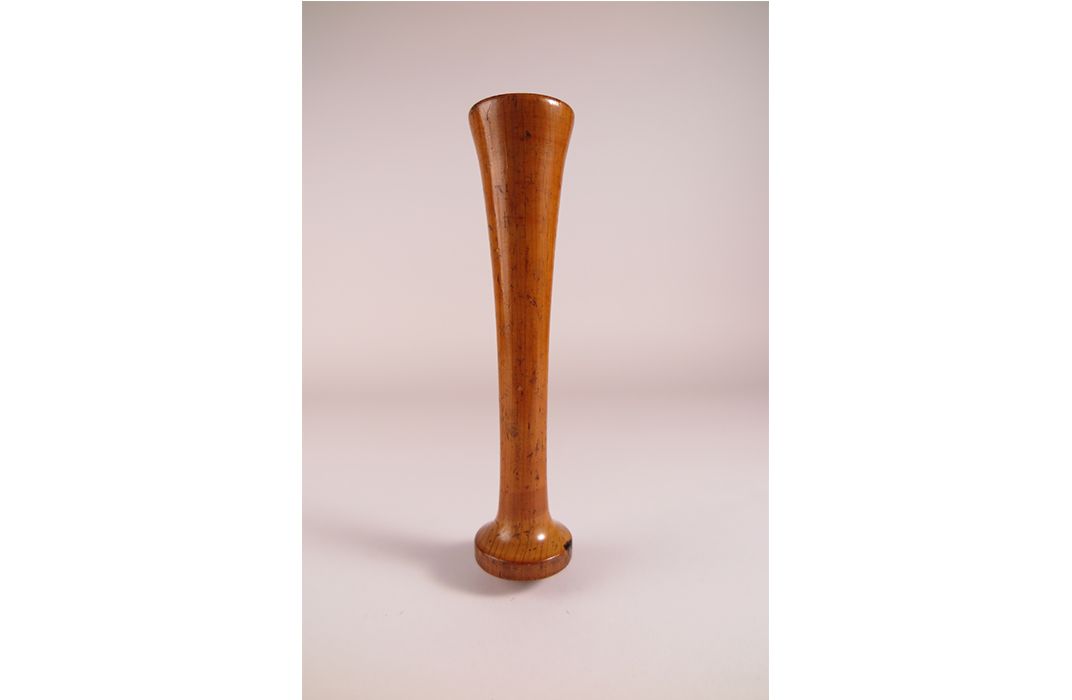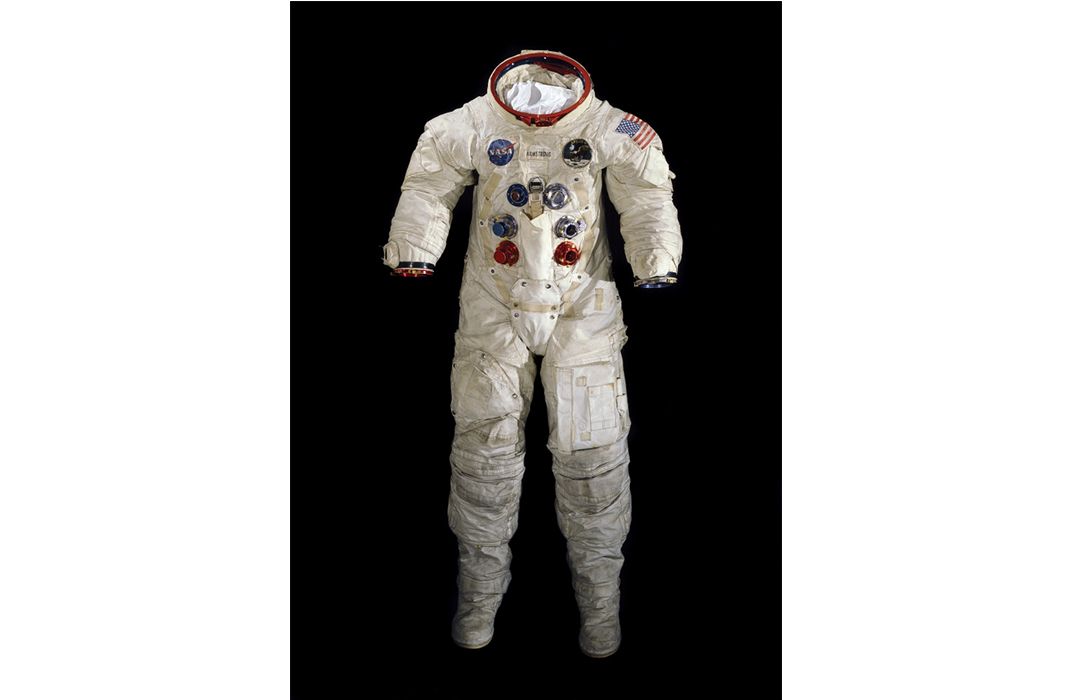The Smithsonian’s New Secretary David Skorton Takes Questions From the Crowd
The secretary is creating a new teen advisory board, networking with D.C. arts and science leaders and getting to know the collections
/https://tf-cmsv2-smithsonianmag-media.s3.amazonaws.com/filer/46/05/46055d0f-ab84-4c99-b867-56a004d483bb/1072x700askskortonanything720.jpg)
On October 19, the secretary-elect of the Smithsonian Institution will be officially installed, becoming the 13th person to become the chief executive officer of the nation’s largest research and museum complex, overseeing a staff of some 6,500 with almost nearly as many volunteers. On that day, with the Chief Justice of the United States presiding and the Smithsonian Board of Regents in attendance, David Skorton will receive the ceremonial brass key to the Smithsonian Castle Building, a symbol that the Institution is now under his guidance and care.
The ceremony makes official what is already a daily hands-on job for Skorton, the former president of Cornell University and a board-certified cardiologist, who agreed to take questions last week from Smithsonian.com readers.
We collected the questions from Twitter and Facebook and pulled them together for this interview. The new secretary addressed everything from climate change to education to the D.C. arts scene and the digitization of the collections.
Our readers are especially interested in technology and its future at the Smithsonian. On Facebook, Shawn Hill inquires: How long will it take to 3D digitize the Smithsonian’s 138 million artifacts?
David Skorton: I can’t give you a precise answer on how long it would take to digitize in some fashion, let alone 3D digitize the entire collection. Some aspects of the collection are going to be less amenable to digitization than others, understanding that the collection consists of object specimens, works of art, a wide, wide, wide variety of different types of things. It is a time-consuming process, and as the technology for capturing digital images evolves, any estimate of how long it would take would also evolve. It will take awhile is probably the most precise thing I can say.
Mischi Doll asks if the omnipresence of digital versions somehow detracts from the authenticity of the original artifacts?
DS: This is a terrific question. It depends on the point of view of the viewer and I believe it also may depend to some extent on the generation of the viewer. I am a Boomer, and I’m used to looking at objects, paintings, works of art, other types of artifacts in the flesh, looking at it, getting a feel for the texture of the surface, the way light reflects off of it and different angles.
I believe that digitization of those images can come close, but, with current technology not completely match, the experience of being face-to-face, so to speak, with the real thing.
On the other hand, the Smithsonian’s collections are broad and deep, and in my view should not be limited to those who can afford the time and investment to get to Washington and to get to the National Mall or to New York City to our other museums.
My predecessor Wayne Clough described the digitization effort as a democratization of the collection. I think that digital technology in many cases doesn’t quite match the original. But I think it’s well worth the tradeoff to allow much broader access to this set of national treasures.

The mystery of the Hope Diamond perennially generates intrigue. Sally Scott on Facebook asks: Have you encountered any “odd” experiences yet with the Diamond?
DS: No, to be perfectly frank I have not yet spent any time with the Hope Diamond since I’ve been here. I’m working my way through many of the museums and different parts of the museums. I haven’t gotten there yet. I also haven’t had any unusual experiences with any of the other artifacts. [Laughs] I have had some unusual experiences with some of the staff who work with me, but I’m not going to elaborate on that.
Nick Page wants to hear about your behind-the-scenes experiences with any of the Smithsonian’s most “closely guarded” artifacts. And Carlos de Obaldia asks you to identify your favorite artifact.
DS: I’ve seen so many things behind the scenes that have intrigued and amazed and inspired me that it’s really hard to choose a single one, but I’ll give you a sampling. I’m a cardiologist and from the generation of cardiologists who depended more on the stethoscope and listening to the patient’s report as a way of diagnosing illness prior to the current state of advanced imaging.
I did research that was part of a very large effort to advance the state of imaging, but my training was from an era where we depended much more on the physical examination and patient’s history. So, of course, I wanted to know what the Smithsonian collection of stethoscopes was like. And it took my breath away to be able to be near some of these early iterations of a way to transmit the sounds of the heart and the chest to the human ear, and that was very, very moving for me.
In fact, I’m going to have a small exhibit in the conference room near my office with a couple of stethoscopes that I have had for years or decades and a couple from the collection so that people who are visiting can see a little bit of the evolution.
When I was a kid and lived in Los Angeles, my dad and I used to go to Chavez Ravine to watch the Dodgers and we would watch Sandy Koufax pitch. It was a sight to behold and I got very near Sandy Koufax’s mitt at the National Museum of American History.
I also was firmly put in my place when I asked the curator, “Can I put my hand in the mitt?” He said, “Absolutely not.” And I learned two things from that experience: the Secretary doesn’t hold any rank over the artifacts and that’s the way it should be, and, secondly, I have a lot to learn about the protocols for making sure that these treasured and increasingly rare objects are here for generations to come.

From Facebook, Bob Murphey inquires whether you’ve found a major omission yet in the collections?
DS: I’m asked that question a lot and I have to hedge. I’m still getting my arms around the depth of the collections. I’m never going to understand anything approaching a broad view of the 138 million things at the Smithsonian’s unbelievable collection, so I really haven’t found any major category.
I haven’t seen much in the way of pictures from my high school phase, [laughs] but I actually don’t think those things are worth preserving.
But in a serious vein, I very much would like to understand, and a question I’ve asked a couple of times so far—what the role of the public might be in deciding what the collection should include. I don’t exactly know what a practical way to implement some public input would be. We have highly trained curators who are not only experts in a particular area of science or art or humanities or social science, but also understand, in a deep, three-dimensional way, what the collection is like now, what makes sense and what they believe as experts, as professionals, might be of value in the context of this kind of collection and the sort of visitorship or viewership that we have.
Nonetheless, I think some feedback from the public about everything we do is really important. I spend a little bit of time wandering around, when I have a few spare minutes here and there, into the museums that are adjacent to the Castle or to the Sculpture Garden in fair weather just talking with visitors, tourists, others and I’ve asked some of them, you know, what do you think of the collection? What would you like to see?
So far, I haven’t found anyone who’s brought something up that we do not have any of. In other words, everything people have said I sure would like to know more about “X” or “Y,” it turns out, not surprisingly, that the Smithsonian already has breadth and depth in this or that area, but I’m going to keep asking.
@BlaireMoskowitz asks: What are your thoughts on the future of crowdsourced exhibitions? How should the Smithsonian Institution as a public institution participate?
DS: Just to say that, like a lot of other things related to the Smithsonian, I’m a student of what’s going on, not a master of what’s going on.
But I do think that crowdsourcing or some other way to effect changes in what we do is healthy, and one quick thing that I’m going to do, which I don’t think would fall in the category of crowdsourcing but the same general endeavor is, I’m going to set up a youth advisory council of high school-aged students from around the D.C. area.
I just met recently with Mayor Muriel Bowser, who was just terrific, very receptive to the idea, and all the logistics and details aren’t set up yet, but that combination of people from outside, our professional staff and young people, the future of our visitors, I think, will really be fascinating.

Funding is a key issue for our readers. @danmcknight observes how significant it is that the Smithsonian museums are free and that money is not a barrier to entry. And Charlotte Hoar on FB said she’d like to see even more museums covering other topics and more Smithsonian museums built in other parts of the country. @deepakkanungo hopes that there will be more artifacts added to the aerospace collections.
How will you manage those expectations of free access and continued growth, working both with Congress as well as in raising private funding?
DS: Well, the first thing, like any aspect of being part of a leadership team is to be very honest with people when they ask a question and the honest answer to that question is that we’re quite resource-limited at the Smithsonian right now in terms of the concept of adding in a major way to the collections or adding in a major way to the number of museums.
That doesn’t mean that we don’t add to the collections. We do all the time and that doesn’t mean that we won’t see new museums at some point in the future. Time will tell.
But it is important to get your points across. During a recession, where the country has had enormous revenue problems in both our private lives and in our public lives, Congress has been generous and steadfast with the Institution, maintaining a budget that’s allowed us to continue to serve the American people in the best possible way, and that is with breadth and depth and low, low barriers to access to the collections.
And, by the way, not only low barriers in terms of not having to pay an entry fee but also lowering barriers because of the digital access to the collections.
And so I want to go on record as saying that I have great respect and enormous gratitude that Congress has felt in its wisdom to maintain stable appropriations to the Smithsonian.
Having said that, we have to, in order to be good stewards of what we already have, in order to continue the level of quality the public has a right to expect, as new ideas occur, we have to identify revenue streams to permit those new ideas to prosper.
The comprehensive philanthropic campaign that my predecessor, Wayne Clough, began is very, very successful. We’re moving in on the goal and people have been very, very generous with the Institution. Congress continues to be generous and, as I said, steadfast, and so I’m an optimist by nature.
I think we will be able to fund new initiatives and new things as they come along, but we’ll have to be careful and nothing in the nature of revenue constraints should stop us from dreaming, planning and looking forward, but we need to do it realistically. And the last thing I want to say is that the real secret of the quality and the inspiration and the magic of the Smithsonian is its people, the professional people.
So while we’re thinking about collections and while we’re thinking about museums themselves, renovations, the possibility of new museums, adding to major collections, we have to continue to focus on the size and nature of our workforce and the resources we put at their disposal to do the best work. I want to make sure that we keep the focus on our people.
Citing the struggle that other organizations including National Geographic, PBS and NPR are experiencing with private, corporate and politicized sponsorships, Monica Cas on Facebook wants to know how the Smithsonian plans to maintain its reputation as a completely independent, scientifically well-regarded, public institution?
DS: I could do no better in pursuit of that goal than to stay the course that my 12 predecessors and Al Horvath, as Acting Secretary, the path that they have charted.
The Smithsonian has maintained over the generations and decades what I think is a very admirable balance between public funding and running every iota of our operation in the public interest and as a public trust, and at the same time, being responsible stewards of the money that we get from Congress, the precious money that the American taxpayer is putting into this Institution, by raising philanthropic money to supplement it. [Those funds] allow things to happen that just could not happen even with the generous Congressional appropriation, so I think my predecessors have found a very good balance.
I’m comfortable from even the three months that I’ve been here—and the 15 months that I was learning about the place since my appointment—that the Smithsonian’s choices on collections are not affected by political or monetary interests.
Rather, the leaders of the Smithsonian, including those in advancement, the museum directors, the curators, have found a way to come up with terrific ideas that really get people excited and match those ideas with people of capacity who can help us achieve them without compromising in any way the values and principles that underlie the beauty of the collection.
And I want to hasten to add that people of capacity does not just mean people who can give gifts in the millions of dollars. You talked about crowdsourcing. The kickstarter effort that allowed us to quickly raise the money for the Neil Armstrong suit was a great example of how gifts of a wide variety of sizes, not only the mega gifts, to make dreams come true for the American public through the Smithsonian.

Given the heated political discourse of our times, readers including Derek Williams want to better understand how the Smithsonian can remain above the fray. In addressing issues such as the Anthropocene and global climate change, he wants to know whether the Smithsonian has a political agenda?
DS: I’ve worked in a lot of scientific organizations and cultural venues and an honest answer is that everyone of us has political points of view one way or the other. But when you go from the individual to the organization, when you go from the individual citizen to the Institution, when you go from the individual to the grouping within the Institution, the sweet spot of leadership is to make sure that things that are done represent the best of the available field of knowledge, whatever it happens to be, whether it’s our history or astrophysics.
And so in the case of climate change, again my predecessor, Wayne Clough, oversaw the release of the public statement about climate change that was based on, in the opinion of the Smithsonian scientists, the best scientific data available.
Now, does scientific data continue to accumulate and do opinions eventually change at times? Absolutely.
For example, in the last week we’ve all noticed some changes in thinking about our diets related to milk. And the beauty of the self-correcting nature of scholarship is that as new thoughts or observations or concepts are developed, we want to be objective as we can possibly be, understanding that we’re human, to take those new perspectives and new information and to re-think the overall construct of how we put something together, whether it’s diet or our view of art or anything else that the Smithsonian may touch or be touched by, so I’m very happy that there’s excellent give and take within the Institution.
Of course, not everybody in the Institution agrees about everything. In fact, in a creative organization like the Smithsonian, if we don’t have a lot of good give and take, where people are openly and respectfully disagreeing about things, then we’re not doing our job. We have to look at every issue from every angle, and that is done in the Smithsonian and I’m comfortable that the way it’s been handled up till now has been based on the best thinking available and not on political orientations.
And @BlairMoskowitz adds: As we approach an election year, what are your thoughts on the intersection of politics and culture? Do you foresee a new "culture war"?
DS: I don’t think my thoughts on the intersection of politics and culture are particularly worthy, more than anybody else’s. I would just say that there’s obviously very strong feelings about some issues in our society and to the extent that any of those issues touches the Smithsonian, we will be caught in the crossfire.
So the controversies related to Margaret Sanger’s bust in the National Portrait Gallery is but one example of a deeply felt issue in the United States.
I very much support the decision of our director of the National Portrait Gallery, Kim Sajet, in maintaining the presence of that bust, but yes, politics will intersect with culture.
Now, whether we’ll have culture wars, I suppose it depends on whether one is an optimist or a pessimist. A pessimist might say that the culture wars have gone on, uninterrupted, for generations and the more open our society is, the more we can have conversations, probably like we’re having right now, where individuals can come in from the general public and ask a question of any leader.
I think we’re going to have more give and take and more mixing of opinions, and I think that’s very healthy. That’s part of what makes America what it is.
I think the more of this kind of technology that we can use to bring ideas into the Smithsonian and to get ideas out, the better interaction we’ll have and the better interaction we have, the higher the quality of everything that we do.
But in terms of the culture wars themselves, we will not have a role in the political aspects of anything related to culture or science. But we will have, and do have, and have had a big role in uncovering and discovering information and knowledge and doing creative things and interpreting creative things.
And those things that we interpret and discover and share with the public will—even though I can’t predict exactly which thing will be controversial—over time, they will cause controversies. And in a more general sense, I would say the creative activity in any field is likely from time to time to engender controversy—whether that’s the science of vaccination or whether it is something related to contemporary art.
Creative activity will engender controversy and we have to welcome that. We have to embrace it. And we have to make what we share in the Smithsonian an honest reflection of the world we live in and the professional expertise of our staff.
Locally, here in DC, our readers are concerned about the Smithsonian’s huge presence in the city. On Twitter we heard from @TheDCDocent: How will you engage the local DC arts and science community?
DS: That is one of the things I’m really working on right now. I’ve been meeting with the heads of other cultural agencies and cultural institutions. So from that perspective, I’m beginning to get a feel for the enormous, almost breathtaking intellectual ferment in Washington, covering across the sciences and the arts.
The agency that I’m most familiar with and most close to over decades is the National Institutes of Health because my research was funded by them for many years and because of being a physician I served on advisory panels there and I haven’t had a chance yet, but will be reaching out to learn what I can about any intersection that might occur there.
I’m just getting my sea legs in that regard, but I think it’s really important that the Smithsonian is part of the network of knowledge-based agencies and institutions around the D.C. area.
A lot of that is going to be listening and learning, especially for a neophyte like me and should not be limited, in my view, to the heads of big institutions but the general public, like you’re doing today, and also, as I mentioned, the young people of the greater Washington area who, after all, are the future of our museums.
Our readers recognize you as an educator, and in fact they have high expectations in that arena, too. @bohndrake is a history teacher who incorporates #STEM lessons into the classroom. How will you connect with secondary education, @bohndrake asks. And Rebecca Rhodes on Facebook inquires: Will there be new initiatives in technology to further share collections with students and young people?
DS: The Youth Advisory Council is one way. And also I would remind all of us, all the time, the very profound work that already goes on through the Smithsonian’s director of education Claudine Brown’s good offices—Smithsonian Science Education Center and the Smithsonian Center for Learning and Digital Access—with the K through 12 system throughout the country, as well as throughout the greater metro Washington area.
And speaking of young people: @6thgradersrule from Twitter wants to know: When did you first fall in love with the Smithsonian?
DS: Well, when I was a child, and I can’t remember exactly how old I was, my parents took me to the Museum of Natural History and I saw a dinosaur skeleton, and it really scared me but also intrigued me. That visit had a real big impact on me.
Your skills for literary analysis are being called upon for this final question. @Townwordsmith wants to know what's your favorite book? But he adds, if it isn't The Adventures of Huckleberry Finn, why not?
DS: The Adventures of Huckleberry Finn is actually one of my favorite books but I’m such a bookish person, there’s no way that I can have one single favorite book. I can tell you what’s on my nightstand right now is a real crazy quilt combination of fiction.
I’m re-reading a novel called The Egyptian by Waltari Mika. I’m reading a book that Melissa Chiu gave me, that resulted from the symposium on the museum in the 21st century that she was involved with in the not-too-distant past. I’m constantly reading about flute playing and I have a third edition of something called The Flute Book, trying to move myself from sort of mediocre to better than mediocre, reading descriptions of how to do that. And I subscribe to something called Laphams Quarterly and the topic of that issue I have right now is fashion and I’m just cracking that.
And Smithsonian magazine and Smithsonian.com too, right?
DS: Everyday when I get up.
Secretary David Skorton will take over @Smithsonian’s Twitter to answer your questions on October 27 from 1:15 to 2 p.m. Submit questions with the hashtag, #AskSkorton.
/https://tf-cmsv2-smithsonianmag-media.s3.amazonaws.com/accounts/headshot/Beth_Head_Shot_High_Res-14-v2.png)
/https://tf-cmsv2-smithsonianmag-media.s3.amazonaws.com/accounts/headshot/Beth_Head_Shot_High_Res-14-v2.png)